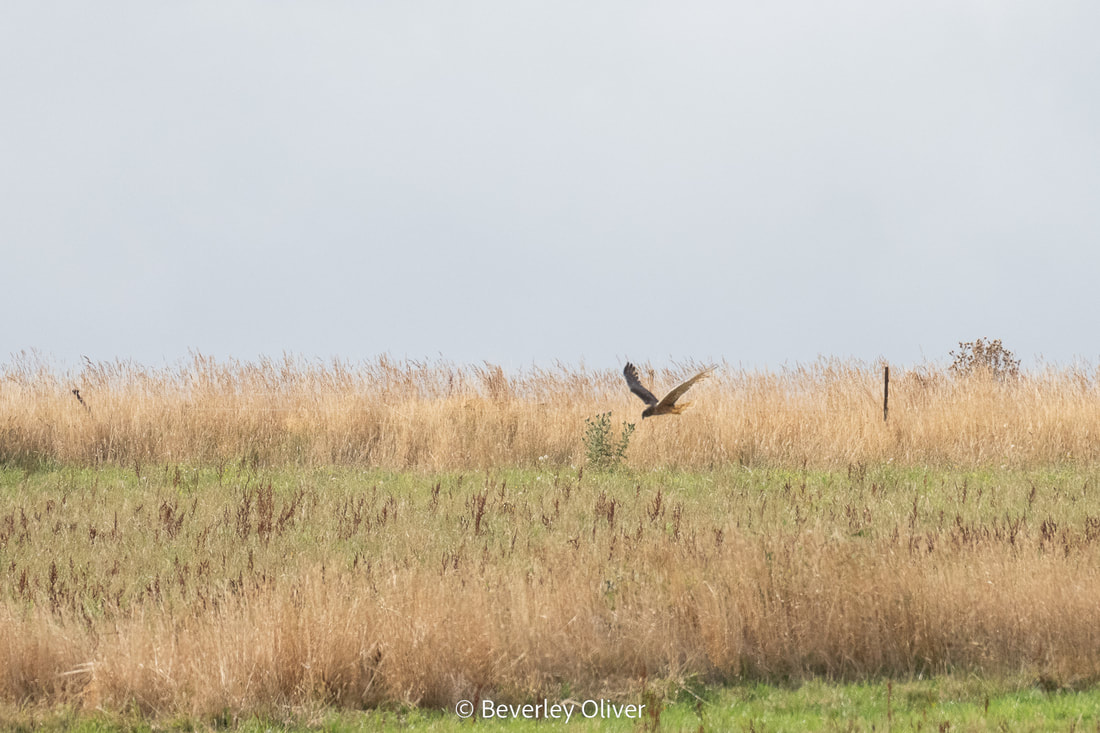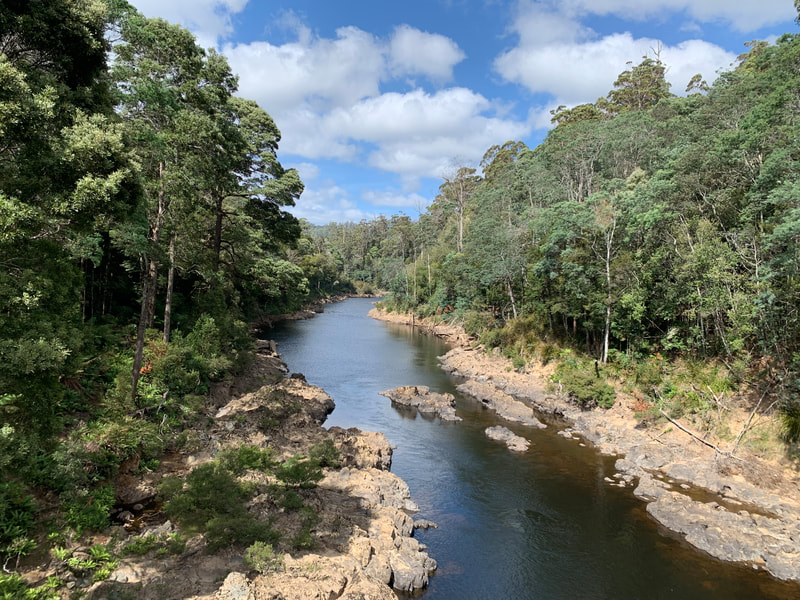|
If you want a fabulous day out in nature, do the Tarkine Drive loop, south-west of Smithton. On the way, we saw our first Tasmanian endemic - fondly known as the turbochook! We set out on a promisingly sunny day, and headed out back of Smithton towards Irishtown and Scotchtown. We could only imagine the hardships of the early settlers in those towns, clearly from different migrant groups, who were probably eking out a living in an often rather forbidding landscape. Our thoughts were interrupted by a very speedy couple of Tasmanian nativehens just near Irishtown. They're known fondly as turbochooks because of their ability to do road runner impersonations. Wow - our first Tasmanian endemic sighting!  But our mind soon turned to more serious matters agin - specifically, to the original inhabitants of the Tarkine area. About 22kms from Smithton, the turnoff for the Tarkine Drive appears, and the landscape changes from farming and cleared land, to what must have been a mighty wilderness, and an abundant home to its first inhabitants. Just after the turnoff we got excited, thinking we could see a Tasmanian wedge-tailed eagle across the paddock. As it happened, we're pretty sure it was a brown falcon, but we're happy seeing any raptor at all! And so we set out to drive the loop. TROWUTTA ARCHOur first stop was Trowutta Arch, 5km of good gravel road from the blacktop. A parking area is opposite a well-signed path, and the walk in is about fifteen minutes. It was like stepping into a wonderland – palm fronds and tall trees, leaf litter and bird song in this shaded vegetation. At the end of the path is a sinkhole filled with green water, almost cave-like among the rocky outcrop. That's because this arch was formed when a cave collapsed. We could hear a raucous bird call we’d not heard before (and which we now know to be the black currawong, a Tasmanian endemic). ‘Sacred’ was the word that sprang to mind as we contemplated this place in silence. We imagined that this was likely a place of sacred acts, rituals, initiations – and of a plentiful source of water. Well, if this was what Tasmania was all about, we were in for a treat. MILKSHAKE HILLS LOOKOUT WALKWe drove on: the next major stop was the Milkshake Hills Lookout. We decided that a walk to the peak was in order, as we were doing a lot of sitting in the car, and stretching the legs every day is essential. The fIrst part of this walk is through an easy ten minutes of forest and there were plenty of birds around (for the first time that day). We snapped a few and got a couple of lifers! Yes! Then the path got steeper and we were headed out into the buttongrass and other attractive forms of vegetation and up the escarpment. The path is not difficult. It’s just uphill pretty much all the way, and one of us doesn't really enjoy the hills as much as the flat. Nevertheless, we sallied forth. No birds out there (that we could see) but amazing vegetation – which was known to be attractive to swift parrots during their breeding season. We scoured the landscape but we knew our chances of seeing a "swifty" were slim. Turns out they were even slimmer than that. No parrots. But the view, oh my! We wended our way to the tippy top of the scarp and enjoyed that awesome 360 degree view. There was sign up there alerting us to the possibility of seeing the Tasmanian wedge-tailed eagle, the largest of all the Australian wedgies. We hung about, but we knew, once again, that chance was against us. Ah well, somewhere further down the track maybe…We made our way back to the carpark, had a morsel of lunch and chatted to three Queenslander women in their motorhomes – also keen bird photographers. Always nice to meet others from our tribe. FINISHING THE LOOPWe made our way around the rest of the loop, not necessarily stopping at every place. But we pulled up at a sinkhole very close to the main road, alerted by a motorhome that had clearly misjudged the edge of the road, and almost rolled over. It wasn't going anywhere anytime soon, and the occupants had clearly abandoned it. How awful – a holiday can turn sour so quickly. The sinkhole was impressive – two other tourists turned up and we realised we had identical drones so we both had a brief flight and enjoyed chatting. We meet so many lovely people on the track. On our last stop on the loop, we were at the Arthur River bridge – this river was impressive. There were our new Queensland friends, and they had just photographed a pink robin. We were envious in a good way, but had no such luck. They also told us they’d seen a Tassie wedgie back near Smithton, near the cemetery (we tried our luck but to no avail – that wedgie was eluding us again!). We headed back to Smithton for our second and final night. And we were so impressed with Stanley we slipped back there for another little glimpse, and a few more holiday essentials from the providore. No more turbochooks spotted that day, but at least we had seen our first! Overall, we were impressed with the Tarkine Drive, but we were also a little disappointed. What we saw was clearly a mere shadow of what used to be there, a mighty and compelling wilderness. It was almost like what was left – and preserved int the drive – was a museum piece. We’re not against progress, and we know how much of it we have enjoyed, but it made us think about just how little is left of some of these absolutely glorious places. We were sorry not to be heading further west to see the wild side of Tassie, but that was not the plan for this trip – we were headed to the centre and the east…so we have reserved the truly wild west for a subsequent adventure.
Comments
|
SUBSCRIBETo get blog updates, signup when the form appears on screen, or contact us. We'll contact you about once a month with an update. To find a blog about a bird or a place, use this search bar, or check out our Google map.
Archives
September 2023
|






